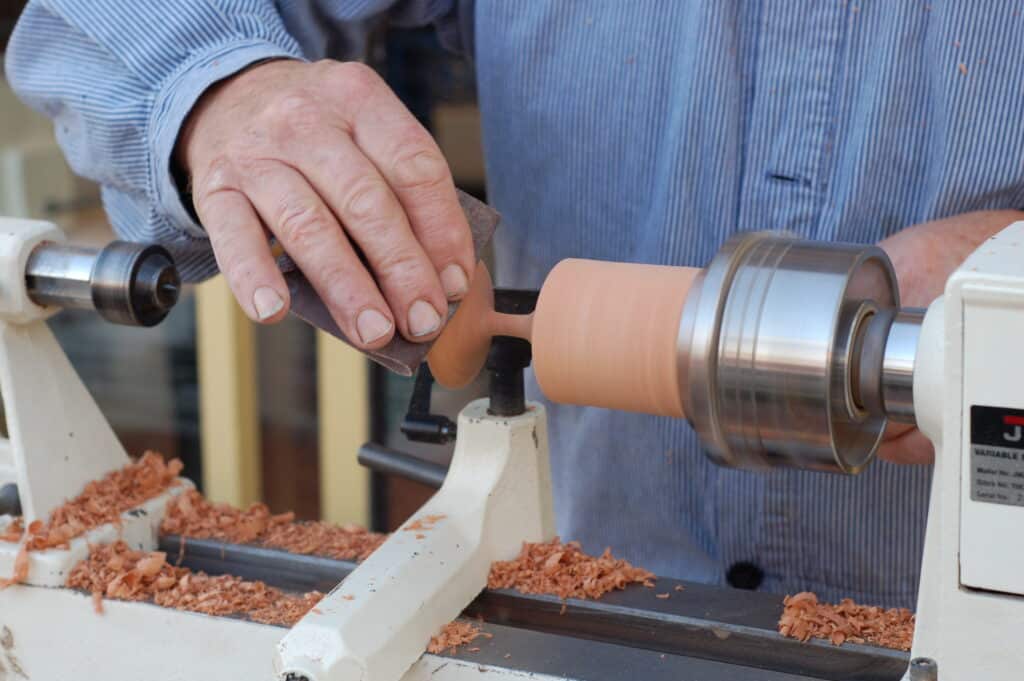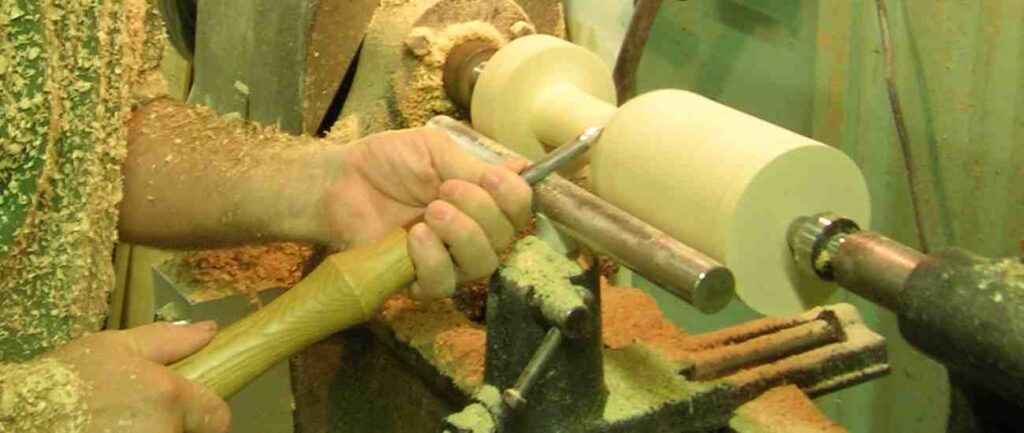Woodturning is a timeless craft that has captivated artisans and enthusiasts for centuries. From humble beginnings to intricate masterpieces, woodturning encompasses a wide range of techniques and styles, making it a versatile and rewarding pursuit for beginners and experts alike. In this article, we’ll delve into the art of woodturning, exploring its rich history, essential tools and equipment, fundamental techniques, and the boundless creativity it inspires.
A Brief History of Woodturning
The origins of woodturning can be traced back thousands of years to ancient civilizations such as the Egyptians, Romans, and Chinese. Early woodturners used simple hand tools to shape wood on a lathe, creating functional objects such as bowls, utensils, and furniture components.

During the Middle Ages, woodturning flourished as skilled craftsmen produced intricate designs for royal courts and wealthy patrons. The development of the pole lathe, powered by a foot pedal, revolutionized the craft, enabling woodturners to create larger and more precise pieces.
In the 18th and 19th centuries, industrialization brought significant advancements to woodturning with the introduction of steam-powered lathes and mass production techniques. This era saw the rise of decorative turning, characterized by ornate patterns and intricate details.
Today, woodturning remains a vibrant and evolving art form, blending traditional techniques with modern innovations. With the advent of electric lathes, carbide cutting tools, and computer-controlled machinery, woodturners have unprecedented opportunities to push the boundaries of their creativity.
Essential Tools and Equipment
One of the key attractions of woodturning is its accessibility. Unlike many crafts that require extensive investments in specialized equipment, woodturning can be pursued with relatively few tools and materials. Here are some essential items to get started:
- Lathe: The centerpiece of any woodturner’s workshop, the lathe is a machine used to rotate wood while shaping it with cutting tools. Lathes come in various sizes and configurations, from compact benchtop models to large floor-standing units.
- Turning Tools: Woodturning tools are designed specifically for shaping wood on the lathe. The basic set typically includes gouges, skew chisels, and parting tools, each serving a distinct purpose in the turning process.
- Chuck and Faceplate: Chucks and faceplates are used to secure the wood blank to the lathe during turning. Chucks grip the wood from the inside, while faceplates are attached to the outside of the blank.
- Safety Gear: Safety should always be a top priority when woodturning. Essential safety gear includes a face shield, dust mask, and sturdy footwear to protect against flying wood chips and debris.
- Sanding and Finishing Supplies: Sandpaper, sanding pads, and finishing oils are essential for achieving smooth surfaces and enhancing the natural beauty of the wood.
Fundamental Techniques
Woodturning encompasses a wide range of techniques, each requiring skill, practice, and patience to master. Here are some fundamental techniques to explore:

- Spindle Turning: Spindle turning involves shaping long, cylindrical pieces of wood, such as chair legs, table legs, and tool handles. This technique emphasizes precision and symmetry, as the wood is turned between centers on the lathe.
- Bowl Turning: Bowl turning is a popular branch of woodturning that involves shaping concave forms from solid wood blanks. This technique requires careful consideration of grain orientation, tool selection, and hollowing methods to achieve balanced and functional bowls.
- Hollow Form Turning: Hollow form turning is a specialized technique used to create vessels with thin walls and narrow necks, such as vases, goblets, and urns. This technique requires skillful hollowing tools and techniques to remove wood from the interior of the form without compromising its structural integrity.
- Ornamental Turning: Ornamental turning is a decorative technique that involves embellishing wood surfaces with intricate patterns, textures, and inlays. This technique allows woodturners to showcase their artistic talents and create one-of-a-kind pieces that are as visually stunning as they are technically challenging.
Exploring Creativity
One of the most rewarding aspects of woodturning is the freedom it offers for creative expression. Whether you’re a seasoned professional or a novice enthusiast, there’s always something new to discover and explore in the world of woodturning. From experimenting with different wood species and finishes to pushing the boundaries of form and design, the possibilities are endless.
In conclusion, woodturning is a captivating and fulfilling craft that offers a unique blend of tradition, innovation, and artistic expression. Whether you’re drawn to its rich history, mesmerized by the rhythmic motion of the lathe, or inspired by the endless possibilities of turning wood into art, there’s no denying the timeless appeal of woodturning. So why not pick up a lathe, sharpen your tools, and embark on your own journey of exploration and discovery in the fascinating world of woodturning?
